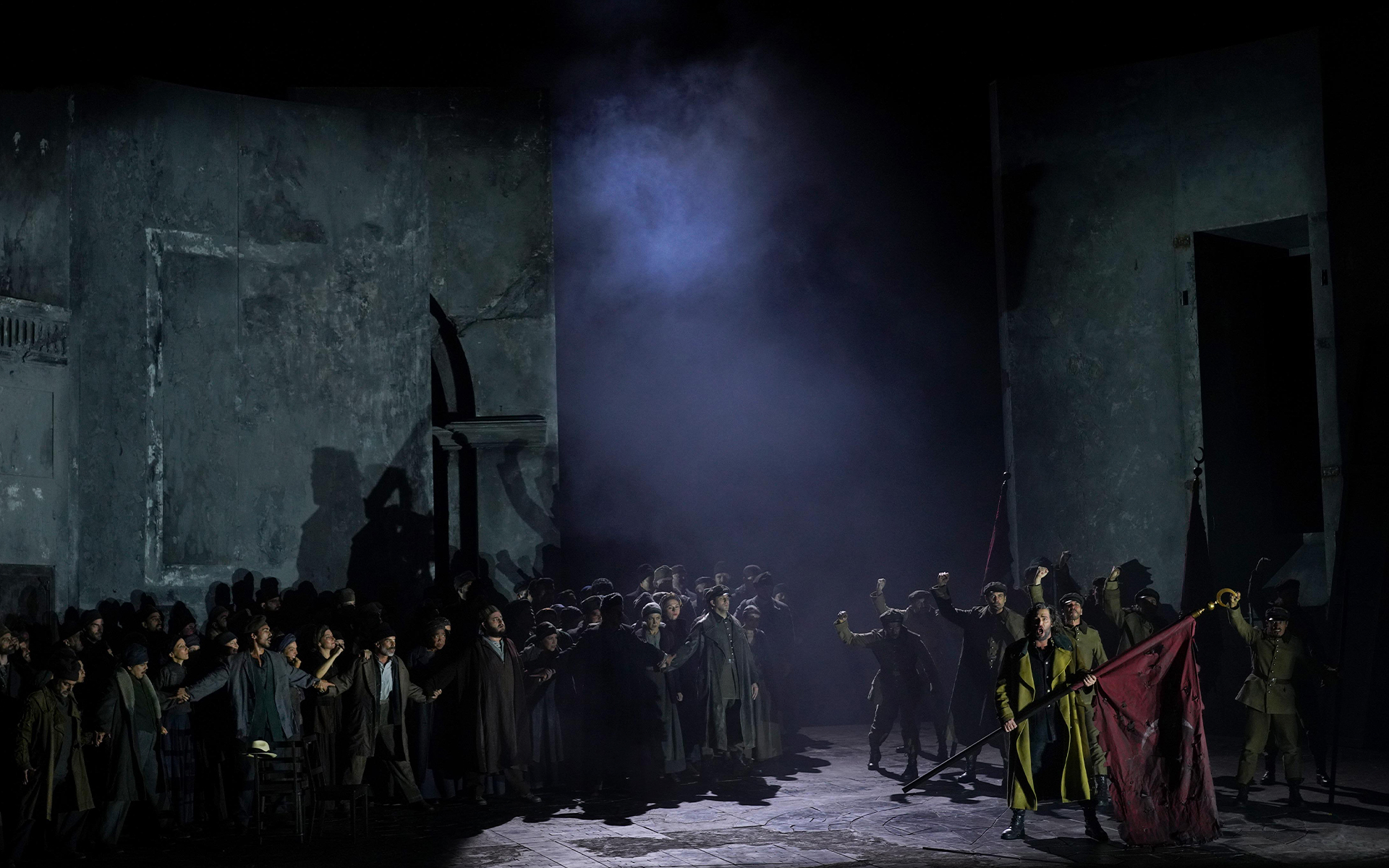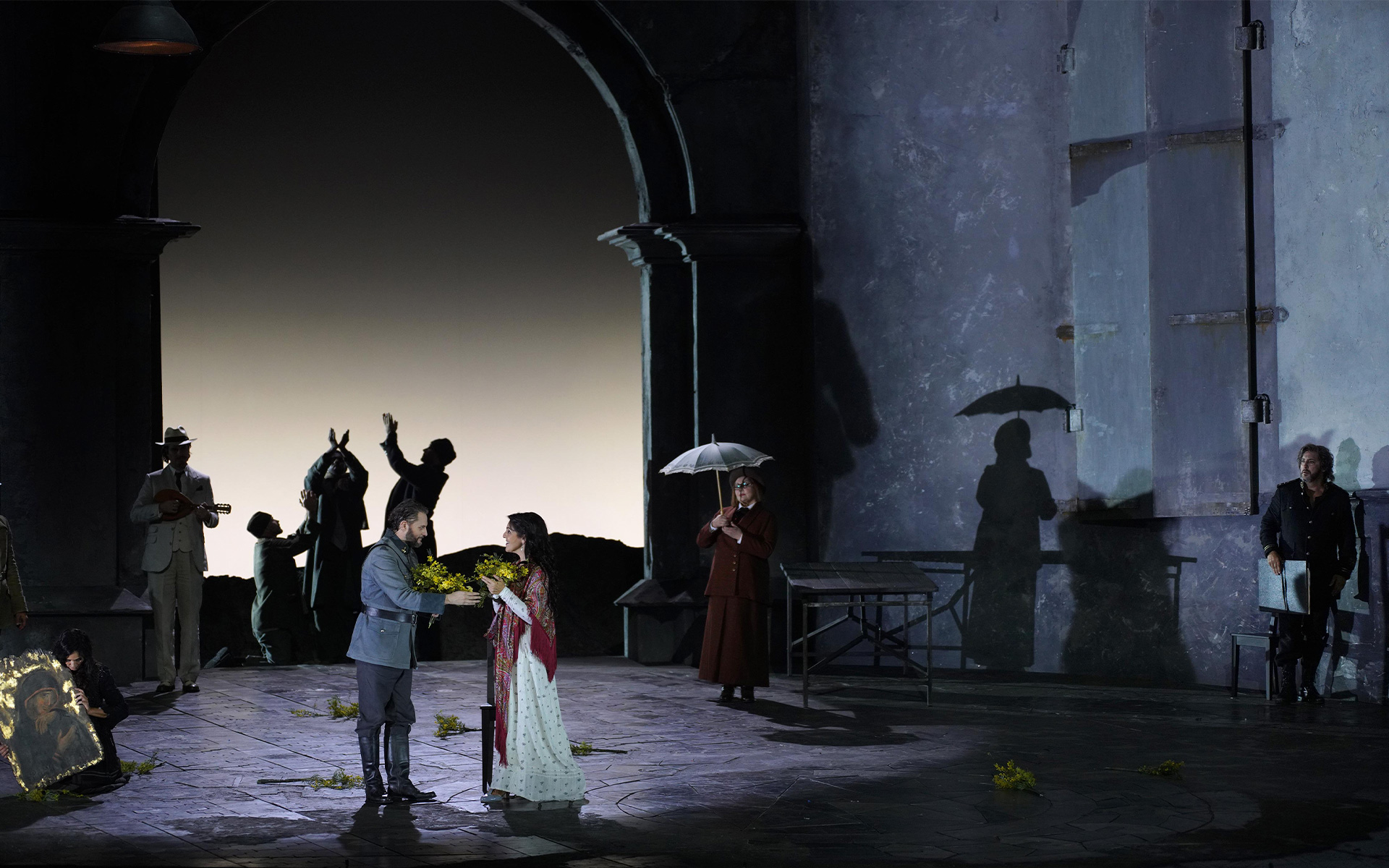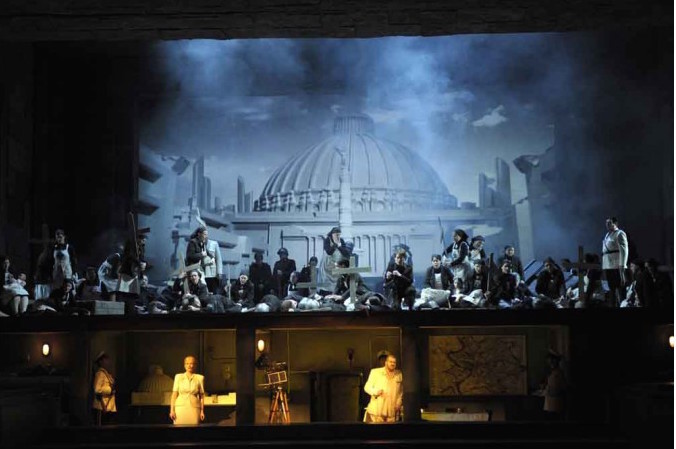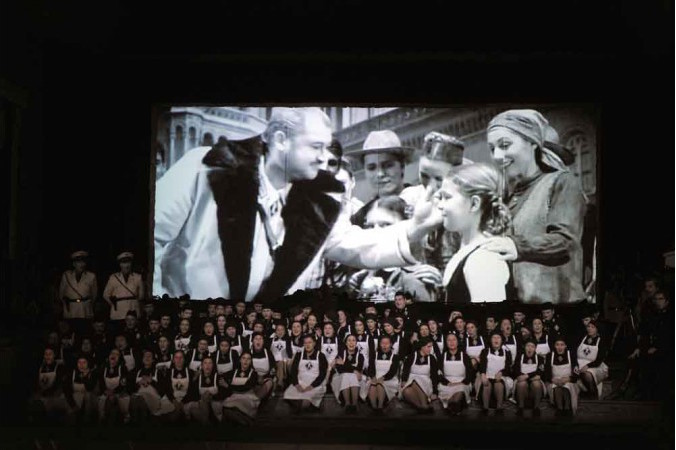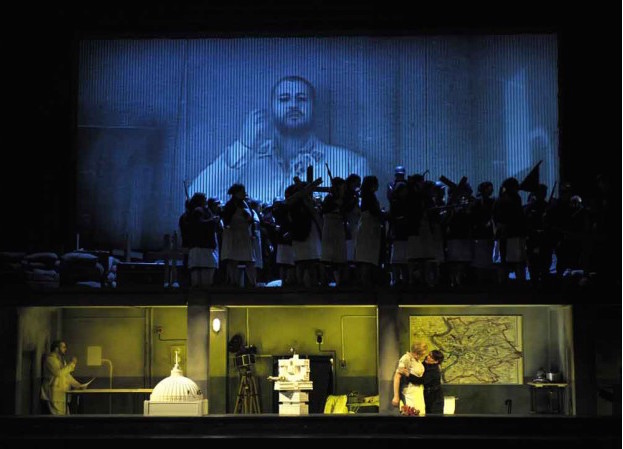Madrid, 28 de septiembre de 2025.
Desde Aida (y costó convencerle para que la conpusiera), el gran Giuseppe Verdi tenía la intención de retirarse. Ya había compuesto bastante en su juventud, durante sus famosos "años de prisión", y en décadas sucesivas, en las que había legado al mundo gran parte de la obra por la que hoy es recordado. Sin embargo, al genio italiano aún le quedaba mucho que decir. En 1874, con motivo de la muerte de Alessandro Manzoni, compuso un Réquiem sobrecogedor. En 1881 haría una revisión de su Simon Boccanegra que establecería la obra en el repertorio. En 1883 y 1886 revisó la versión italiana de su Don Carlo. Pero para componer una nueva ópera, fue difícil convencerle. Finalmente aceptó el reto: esta vez sobre el Otelo de Shakespeare, autor que fascinaba a Verdi. Ya en 1847 dio una obra maestra, Macbeth. A Verdi le fascinaba el personaje de Yago, y en un principio su nueva creación llevaría este nombre. Pero finalmente se llamaría Otello. El estreno en 1887 de su Otello en la Scala de Milán fue todo un éxito y se consagró en el repertorio operístico desde ese mismo momento.
Poco después de su estreno, llegó a Madrid, donde se estrenó en el Teatro Real en 1890. Poco después la cantaría Francesco Tamagno, el mismo que estrenó esta obra en la Scala. Desde entonces, esta ópera se ha representado en Madrid con frecuencia. Plácido Domingo, el último gran Otello de los últimos 40 años, lo cantó varias veces en la capital, incluida una vez en el desaparecido estadio Vicente Calderón en los años 80. Tras la reapertura del Real, se interpretó en 2000 con José Cura y Renato Bruson, y en 2016, la última vez, con Gregory Kunde, George Petean y Ermonela Jaho en el primer reparto, y en el segundo con Alfred Kim y unos memorables Lianna Harotounian y Ángel Ódena. Nueve años después, regresa con la misma puesta en escena, a cargo de David Alden.
La producción de Alden, quien a juzgar por sus producciones de Alcina y Lucia di Lammermoor parece tener un gusto por los edificios ruinosos, tiene detalles muy interesantes, que la hacen más disfrutable en directo que en vídeo. Toda la acción tiene lugar en el enorme y lúgubre salón de un palacio en ruinas, intensificando el drama, reuniendo toda la intriga de Yago y los celos de Otello en una atmósfera violenta, opresiva y asfixiante. La puesta en escena podrá parecer fea, podrá parecer demasiado sombría, pero no dificulta demasiado la comprensión de la obra, permitiendo seguir bien su argumento. En un recurso que parece sacado del teatro isabelino, Yago está presente durante casi toda la acción, que es creación suya; como lo estaban la Virtud o el Vicio en los dramas de la época, como entes sobrenaturales que controlan las acciones humanas. Otro interesante aspecto de la producción es el uso de las sombras, apreciable en diferentes zonas del teatro, especialmente en el lado de los asientos pares. Uno podía ver las sombras de Otello y Desdémona en su dúo de amor, o en el segundo acto, la sombra de Yago, sentado cerca de una puerta, proyectándose gigantesca sobre la sombra de Otello y Casio, una alegoría de su superioridad. El vestuario de Jon Morell traslada la acción en una época indeterminada del siglo pasado. La iluminación de Adam Silverman creaba momentos de cierta belleza, como en el monólogo de Otello "Dio mi potevi", iluminando al moro con una única luz, desde la izquierda, mientras él se revuelve de celos, o el dúo de los amantes del primer acto, así como el trágico final, con una luz azul. El salón está presidido por una gran puerta, que se abre en el segundo acto, para mostrar un paisaje desértico, más propio de un anochecer en el planeta Marte que de Chipre. En el tercero muestra en cambio una pared ruinosa, bañada de una bella luz anaranjada. La producción incorpora danzas, especialmente la de una solista femenina, pero en el segundo acto, los oficiales hacen un baile risible mientras ofrecen regalos a Desdémona. Otello no mata a desdémona estrangulándola, sino aplastándola. Al final, todos abandonan lentamente la escena, menos Yago, quien presencia la tragedia final: Otello muriendo en un rincón, sin poder acercarse a Desdémona, mientras el escenario se oscurece gradualmente.
La música consigue aunar la tradición italiana con las nuevas convenciones musicales, como la ausencia de números cerrados para que el público pudiera aplaudir, y, partiendo de la innata habilidad del compositor para crear ambientes con su música, la partitura de transmite la atmósfera de intrigas, conflictos y emociones del terceto protagonista. No le hacía falta, pero Verdi logró evolucionar en su música hasta medirse a su gran rival artístico, Richard Wagner. En estas funciones, salvo en dos, el director musical es Nicola Luisotti, tan querido en este teatro. Al frente de la Orquesta del Teatro Real, el maestro italiano dirige con su habitual fuerza, algo además bienvenido en esta espectacular obra, si bien a veces podría venir mejor un poco de lirismo. Las cuerdas sonaron bellísimas en el dúo de amor, y estremecedoras en momentos como el tremendo trémolo cuando Otello entra en la habitación de Desdémona, después de haber elevado al público en el aria anterior, tanto como la propia soprano. Los metales del Real, en su potente línea habitual cuando los dirige este maestro, así como el corno inglés y demás instrumentos de viento-madera en la bella introducción al acto cuarto, donde brillaron. El Coro del Teatro Real, a las órdenes de José Luis Basso, estuvo espectacular en el inicio de la obra, donde canta su parte más importante, imponiéndose sus potentes voces al poderoso sonido de la orquesta. Estremecedora fue su interpretación del fragmento "Dio, fulgor della bufera!" y luego en el animado "Fuoco di Gioia". Un momento cumbre es en el final del tercer acto, cuando tienen que cantar "Evviva Otello, Evviva il leon di Venezia", fuera de escena, donde sonaron tan imponentes como ominosos. Se ha contado también con el coro infantil en el segundo acto, los Pequeños Cantores de la ORCAM.
Otello es a Verdi lo que Tristán o Sigfrido a Wagner. Un rol "mata-tenores". Un rol que requiere una fuerza vocal y un timbre dramático, que pone a prueba al tenor que lo interpreta. En el pasado, los tenores tenían miedo del rol. Algunos, como Caruso, aun pudiendo afrontarlo no se atrevían. Hoy en día, es dificilísimo, por no decir imposible, encontrar a un tenor capaz. Y el que lo hace, soporta presiones y comparaciones con tenores del pasado que seguramente eran más capaces que él. Otello es un moro convertido al cristianismo, por lo que para recrear su piel oscura, los tenores se pintaban la cara de negro o marrón. Hoy en día eso es considerado racista, por lo que si el cantante es blanco, Otello también lo es. Ya en 2016, esto generó algún comentario en la prensa. En estas circunstancias, el tenor estadounidense Brian Jagde, se esfuerza en dar lo mejor de sí. Su voz es potente, tiene un timbre agradable, y su entrega es total. Su Otello es el de un joven demasiado impulsivo, y la interpretación fue a mejor a medida que transcurría la obra. El Esultate, de tan difícil tesitura, le costó un poco en la frase final "dopo l'armi lo vinse l'uragano". El mejor momento fue en el "Ora e per sempre addio" donde su canto alcanzó un equilibrio entre fuerza y belleza. En el "Dio mi potevi scagliar" trató de mostrar la fragilidad del personaje con un desgarrador canto. El "Niun mi tema" final le salió todo lo conmovedor que sus medios le permitieron, contribuyendo al aura de tragedia que concluye la obra.
Aunque el tenor es el protagonista de esta ópera, irónicamente el gran reclamo de todas estas funciones es la interpretación de Asmik Grigorian, una de las sopranos más aclamadas de la actualidad, del rol de Desdémona. Grigorian es una consumada cantante-actriz, quien ha asumido, saliendo airosa de momento, un variadísimo repertorio. Además de ser una cantante solvente, es una mujer muy bella y de esbelto físico. Y una vez más, la señora ha superado el reto. Su voz no solamente tiene un bello timbre dramático, sino que es capaz de proyectarla bien por todo el teatro. Es capaz de emitir bellos sonidos como en "te ne rammenti", dulces pianissimos, e incluso un par de imponentes agudos en el dúo con Otello del tercer acto. El momento más esperado de la velada era su gran escena del acto cuarto, con las dos arias juntas: Piangea cantando, la famosa canción del sauce, y el Ave Maria. La Grigorian, transfigurada, convertida en su propio personaje por un instante, dio una lección de canto y sensibilidad (canta de forma conmovedora las dos palabras "cantiamo, cantiamo"), emotividad (otro bello agudo en el "Ah, addio Emilia, addio") y refinamiento (en el Ave Maria cantando con lirismo y transmitiendo la tristeza de su personaje). Finalmente, esa voz del dolor se despide cantando con un timbre bellísimo sus últimas frases "Ingiustamente... uccisa ingiustamente...", antes de quedarse tan bella como rígida... una muestra más de sus dotes escénicas.
Gabriele Viviani interpretó un Yago de volumen generoso, de timbre villanesco, pero un poco plano a la hora de transmitir el personaje... es más bien un matón que un malvado inteligente. Aún recuerdo a Ángel Ódena en este mismo teatro y en este mismo rol, convirtiéndose en la reencarnación del mal absoluto durante el famoso Credo. Viviani canta lo más aseado y correcto posible, y por ejemplo en el final del segundo acto en volumen se puede medir con el Otello de Jagde, pero no transmite del todo las matices de su rico personaje.
Bien Airam Hernández como Cassio, y la veterana mezzosoprano Enkelejda Shkoza como Emilia aún conserva un bello timbre que se deja oír. Impresionante el bajo coreano In Sung Sim como Lodovico, una preciosa voz de bajo, con un grave estupendo, en su breve intervención del tercer acto. Competentes Albert Casals como Roderigo y Fernando Radó como Montano.
El teatro estaba casi lleno, y el público ovacionó con fuerza a Grigorian, así como a Jagde y a Luisotti. Madrid ama a Verdi, y el gran Verdi siempre hace que se salga del teatro con una sonrisa o totalmente elevado. Incluso si el reparto tiene sus más y sus menos. Otello es una ópera tan hermosa, tan vibrante, que es muy difícil aburrirse con ella, y se pasa en un suspiro. Y si cuenta con el aliciente de tener a una gran diva, mucho más.
Las fotografías y vídeos no son de mi autoría, si alguien se muestra disconforme con la publicación de cualquiera de ellas en este blog le pido que me lo haga saber inmediatamente. Cualquier reproducción de este texto necesita mi permiso.

